FRP Gratings

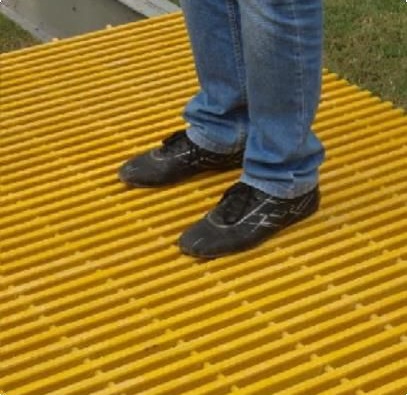



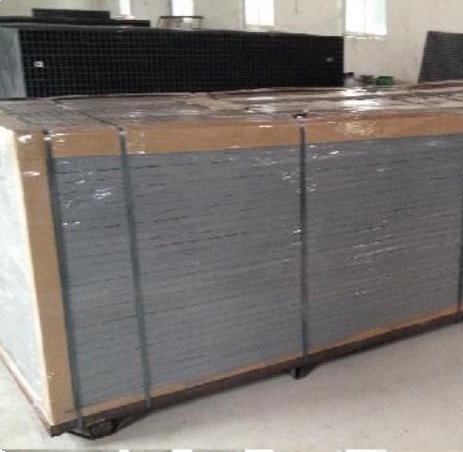
Specifications for FRP Gratings
- GRP/FRP Gratings are produced by wet moulding and hot curing in a heated mould.
- The reinforcement consists of continuous fibreglass rovings in alternating layers, so the loads are distributed evenly in all directions.
- Regularly Moulded GRP Gratings have a polyester resin matrix.
- Glass content is approximately 35%. Standard colours are green, yellow or grey, other colours are available according to RAL.
Advantages of FRP Gratings
- Corrosion And Chemical Resistance.
- High Strength To Weight Ratio.
- Electric And Thermal Non Conductive.
- EMI/RFI Transparent.
Gully Gratings

Moulded Grating

Gully Grating

Pultruded Grating

Square Grating
Comparision with Conventional Material
Features
- Corrosion Resistance
- Strength
- Weight
- Electrical Conductivity
- Thermal Conductivity
- EMI/RFI Transparency
- Fabrication
- Life Cycle Cost
- Environmental Impact
Rawji FRP
High
High
Low
Low
Very Low
Yes
Easy
Low
Low
Steel
Low
High
High
High
High
No
Easy
Moderate
High
Aluminium
Medium
High
Low
High
High
No
Moderate
Moderate
High
Timber
Low
Low
Medium
Moderate
Low
Yes
Easy
High
Low
Material Details
COMPOSITE MATERIAL
Composites are materials made up of at least two different component materials, neither of which is suitable for structural use on its own, but when combined, they form a sturdy and firm material.
FRP / GRP MATERIAL
Fibre Reinforced Plastic / Glass Fibre Reinforced Plastic is a composite material made of a polymer matrix reinforced with fibres. These fibres are typically fibreglass, carbon, or aramid, while the polymer is usually an epoxy, vinylester, or polyester thermosetting plastic.
RAW MATERIAL OF FRP
- Glass Fibres: Provide stiffness and resist tensile and compressive loads.
- Resin: Transfers load between fibres and bonds them together.
- Other Additives: Provide fire retardancy, electrical insulation, etc.
RESIN SYSTEM – Polyester
- Most commonly used; good mechanical, electrical, and chemical balance.
- Can be modified for flame retardancy or self-extinguishing behavior.
- Excellent resistance in weak acid/alkali environments.
- Max operating temp: 80°C (basic grade).
RESIN SYSTEM – Vinyl Esters (VE)
- Combines benefits of polyester and epoxy resins.
- High strength and excellent acid/alkali resistance at high temps.
- Good thermal and electrical insulation.
- Max operating temp: 90–150°C.
Pultrusion Process

Pultrusion is the process of pulling fibreglass reinforcements such as mats and
strands through a proprietary resin and heated die. The result is a specific complex profile that can
be cut to any length. This process offers speed and consistency making it the best method for
producing high-volume linear fiberglass products that require constant cross sections.
Pultrusion refers to pulling plastic raw material through a preformer. This
production method is particularly suitable for tubes, profiles etc. reinforced with continuous fibres,
involving pulling of impregnated fibres via preformers providing the form as, simultaneously, the
plastic is hardened with heat (thermoset) or cooled until solid (thermoplast).
Moulding Process

GRP/FRP Gratings are produced by wet moulding and hot curing in a heated mould. The reinforcement consists of continuous fibreglass rovings in alternatinglayers, so the loads are distributed evenly in all directions. Regularly Moulded GRP Gratings have a polyester resin matrix. Glass content is approximately 35%. standard colours are green, yellow or grey, other colours are available according to RAL.
Resin System For Gratings
| Resin Type | Resin Base | Description | Flame spread rating ASTM E84 |
|---|---|---|---|
| Type IFR | Isopthalic Polyester | Industrial Grade Corrosion resistance & fire retardant | Class 1, 25 or less |
| Type I | Isopthalic Polyester | Industrial Grade Corrosion resistance in acidic environment | Non fire retardant |
| Type V | Vinyl Ester | Superior Corrosion resistance & fire retardant | Class 1, 25 or less |
| Type P | Phenolic | Low smoke and superior fire retardant | Class 1, 5 or less |
Accessories
M CLIP - FOR FIXING MOULDED GRATING WITH SUPPORT STRUCTURE (Ordering Code: ASMGC-38)
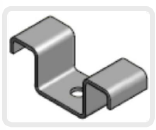
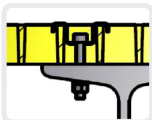
C CLIP - FOR FIXING PULTRUDED GRATING WITH SUPPORT STRUCTURE (Ordering Code: ASPGC-I-00)

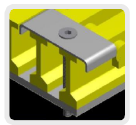
C CLAMP - FOR FIXING TWO MOULDED GRATING PANELS (Ordering Code: ASMGC-C-25/38)


PULTRUDED GRATING CLAMP - FOR FIXING TWO PULTRUDED GRATING PANEL (Ordering Code: ASPGC-I-01)

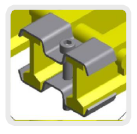
Types of Surface Finish of Grating
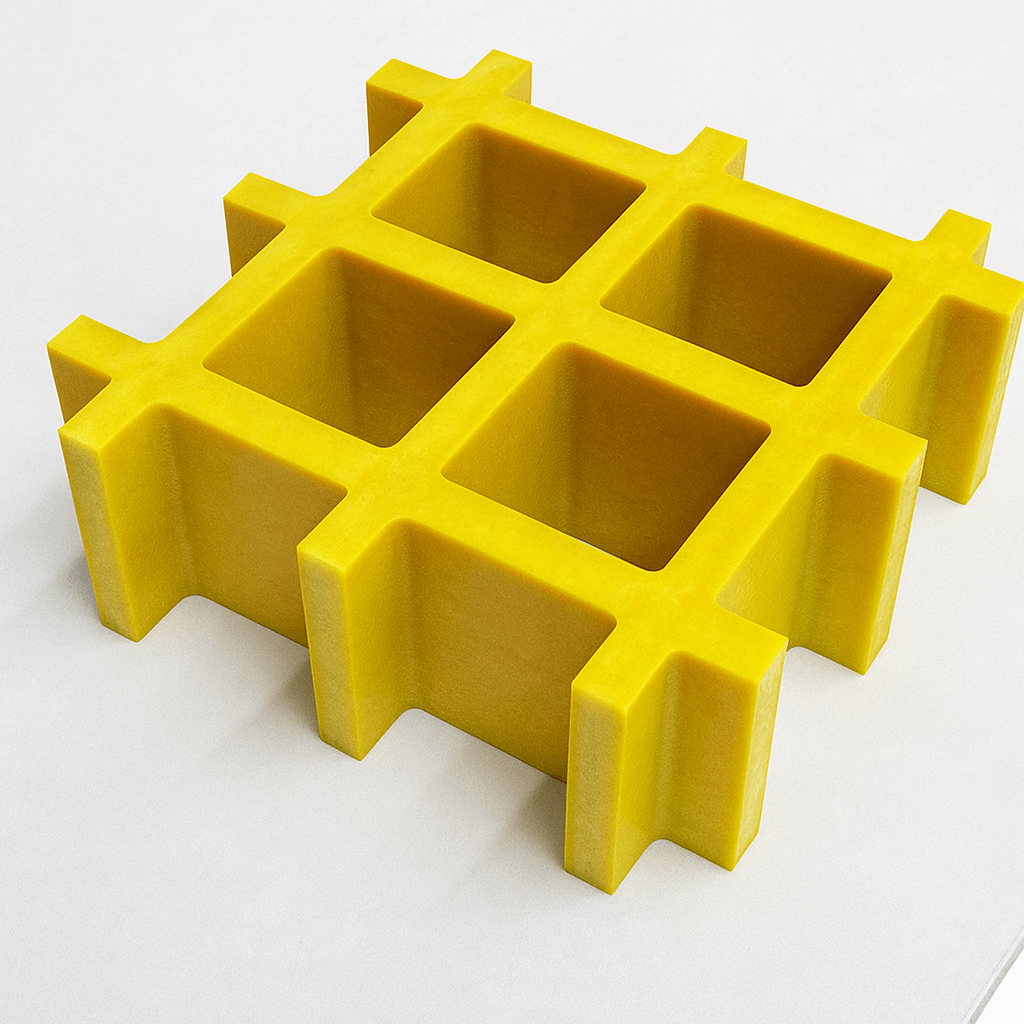
Concave Top: Suitable for wet & oily conditions

Inbuilt Grit: A quartz grit finish applied in the mould during manufacture
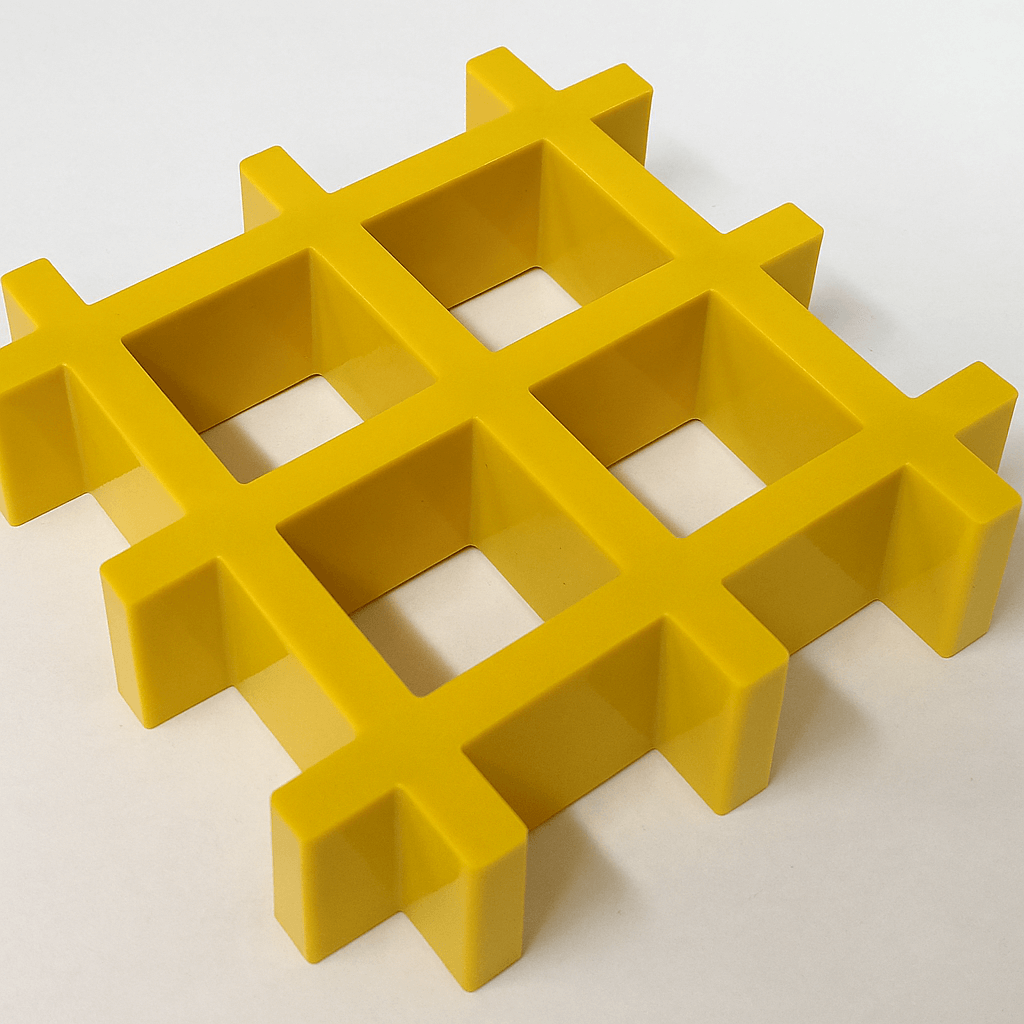
Applied Grit: A quartz grit sealed with a tough, long wearing epoxy coat
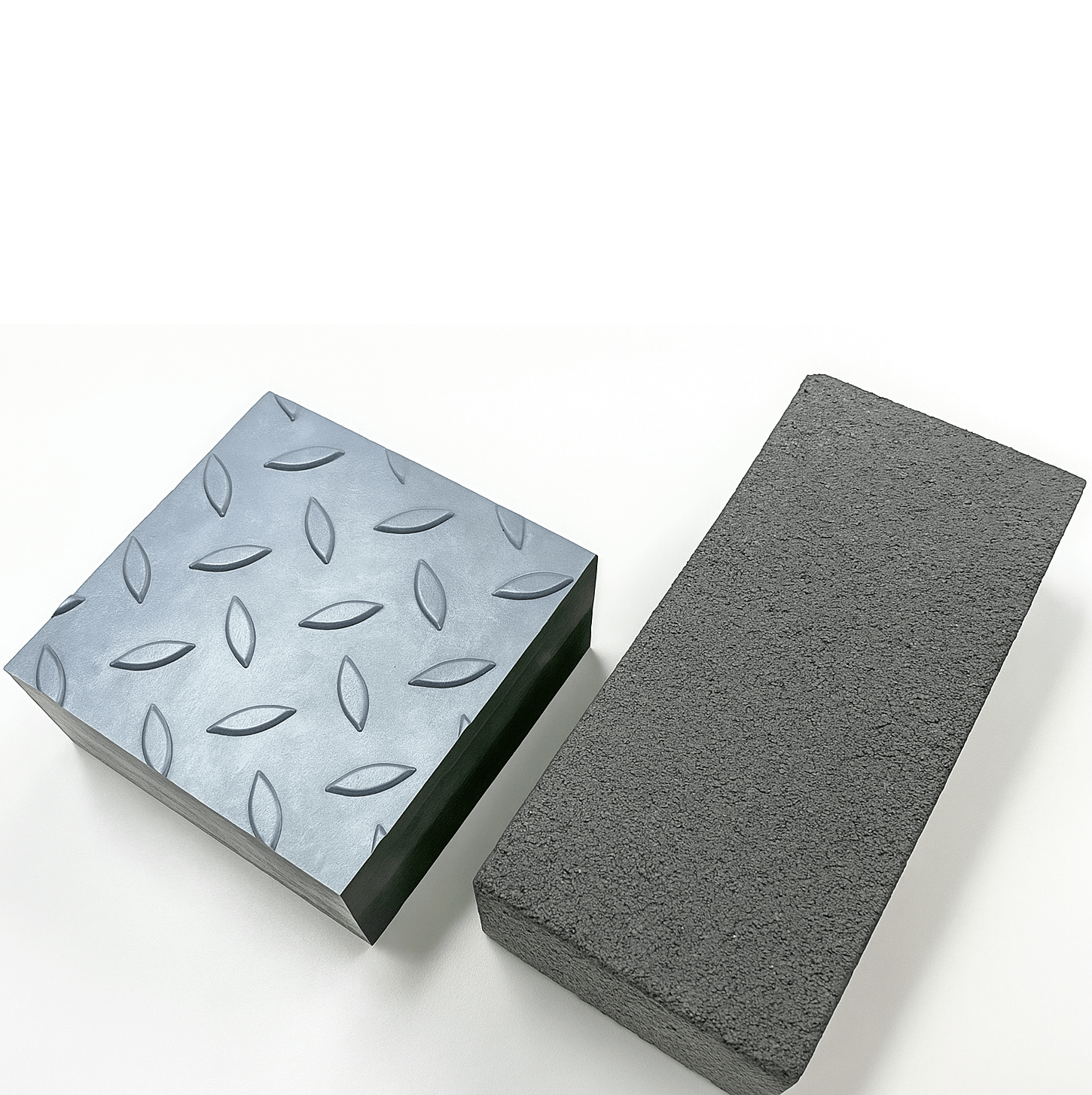
Chequered Plate/Grit Top